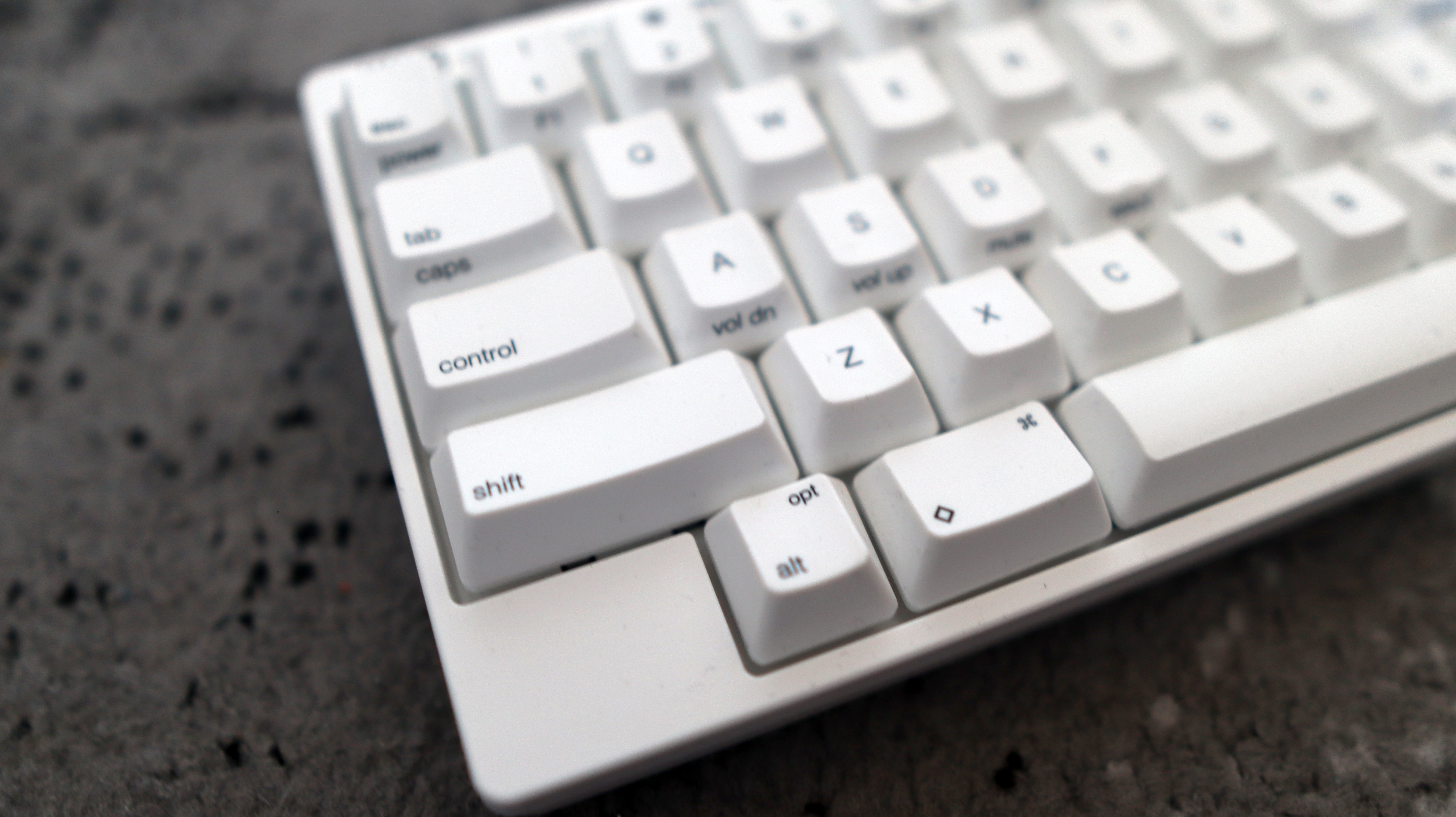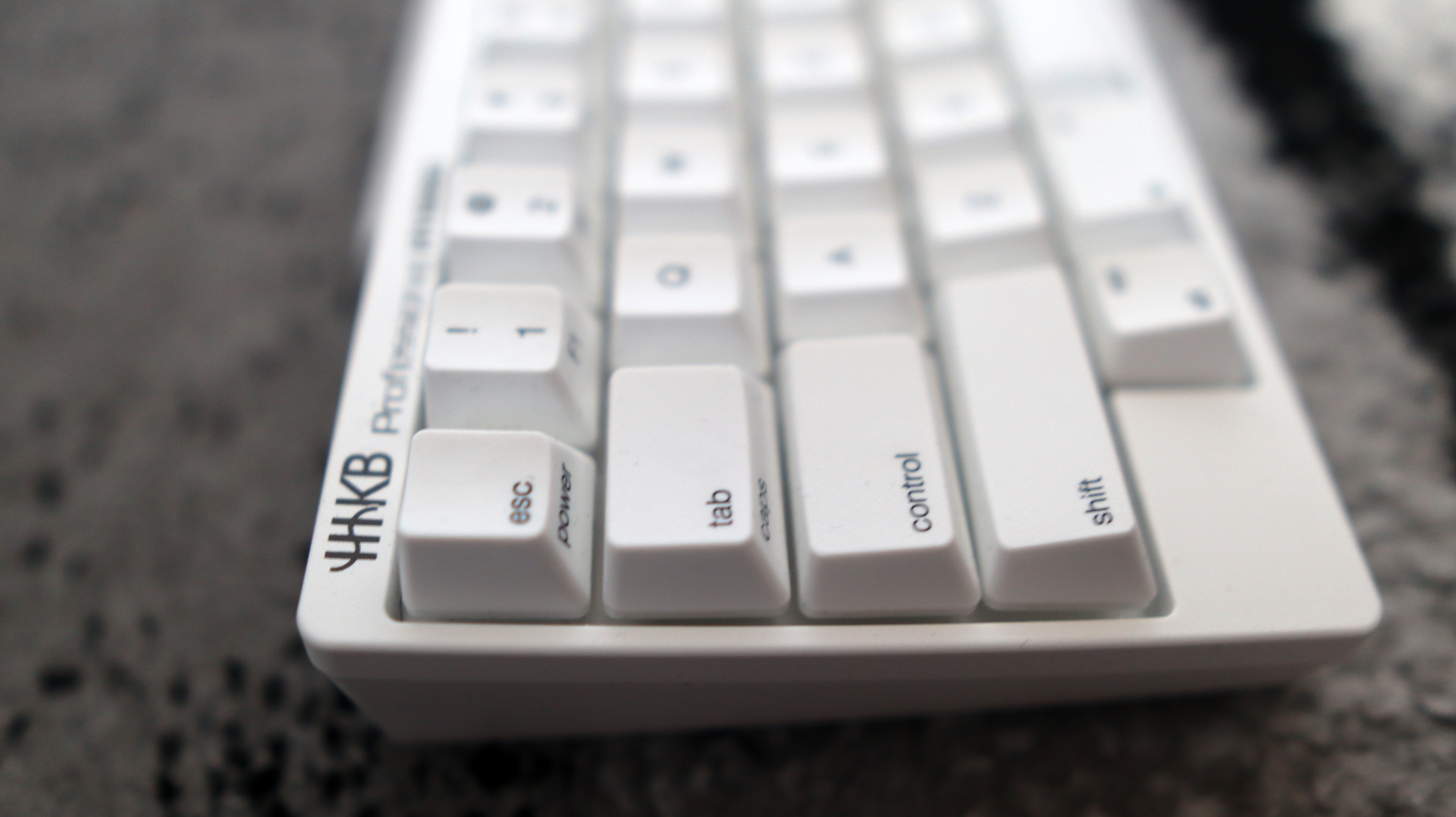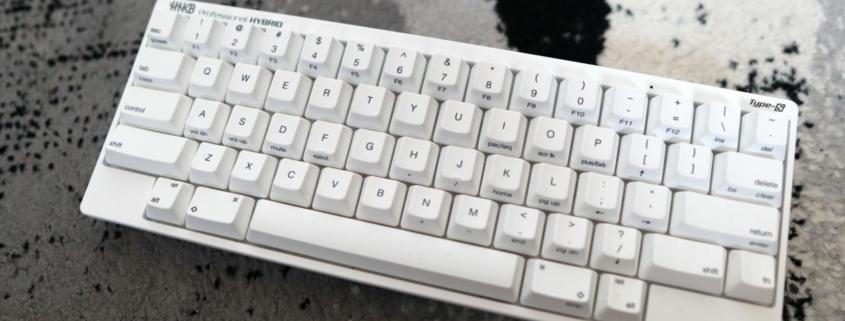HHKB Professional Hybrid Type S
Alright, it may not look like much to most people, but what I’ve got in front of me here is a bit of a holy grail of keyboards to us nerds. The Happy Hacking Keyboard, or as it’s better known, the HHKB, has gained cult-like status amongst a very specific corner of keyboard fans, myself included. It’s one of those keyboards that I saw on forums a few years ago and wanted to own, but the cost and stuff at the time was just too high.
Fast forward to early 2023, and I’m sitting here with an HHKB Professional Hybrid Type-S in front of me. It’s been my daily driver for the last few weeks, well, apart from when I’ve been swapping between it and my Topre Realforce R2 PFU, but anyways, I digress. Would I recommend right out of the gate for you to go and buy one? Well, yeah, definitely, but at the same time, also, no.
Allow me to explain. There are a few things that make the HHKB a unique keyboard in its own right that you may need to get used to. Chief among these is its odd layout. In taking a quick glance down, the HHKB might look like any normal US ANSI layout 60% keyboard, but take another look at it. It’s missing a few keys, most notably Windows keys, and a secondary Control key, and where the hell’s the Caps Lock key? What’s that… it’s now a Control key? How can this be?
Well, the HHKB uses a layout that was first devised by Eiiti Wada (opens in new tab), in collaboration with PFU, the company that makes the HHKB—they’re a big conglomerate business that includes brands like Fujitsu and Ricoh.
HHKB specs
Switch: Topre Switches, 45g
Keycaps: PBT, dye-sub
Lighting: None
Onboard storage: None
Extra ports: None
Connection type: Wireless, Bluetooth
Cable: USB Type-C, detachable (not included!)
Weight: 540g/ 1.19bs
Price: $357 / £300
The story goes that Wada wasn’t happy with having to use a different keyboard layout with differing complexities with every operating system that he had to use, and he wanted to design a one size fits all sort of thing to suit every platform he was using. He saw the keyboard as an accessory that PC makers had neglected, when in fact it’s one of the most integral parts. With that philosophy in mind, he compared the keyboard and PC to a horse and saddle in the Wild West, with one of the best analogies I’ve ever read: “The horse was a consumable good, but the saddle was an interface that their bodies had gotten used to. In the same vein, PCs are consumable goods, while keyboards are important interfaces.”
The point here though is that while the HHKB layout takes some getting used to, and it took me a week or so of constant use to do so, the placement of certain keys makes perfect sense. The single level Enter key directly below backspace means there’s less of a jump for deleting characters, while the same is also true on the left-hand side with the Control key where Caps Lock is. There’s no need to reach down an extra row for modifier keys, keeping your fingers firmly where they should be. 
Of course, it’s touch typists who are really going to feel the benefit of this, but even if you touch type with only half your fingers like I do, the layout is still perfectly usable, and it’s immediately become one of my favourites.
That small 60-key layout also helps the HHKB Professional Type S to be one of the dinkiest keyboards I’ve ever had on my desk. At 540g or so, it’s also immensely light, which may lead you to believe it feels cheaply built, but you couldn’t be more wrong. Despite being entirely comprised of plastic, the HHKB’s chassis is ridiculously sturdy and especially fetching in the ice-white colour I’ve got here. That excellent finishing is also evident on the dye-sub PBT keycaps provided, which feel gorgeous under finger. Given that high-quality construction, there’s also no need to worry about legends wearing off or things looking shiny, unlike with some cheaper ABS keycaps with printed legends.
Apart from the layout, the HHKB also features some intriguing electro-capacitive switches of sorts, which are the same as you get on a Topre RealForce, another one of those holy grail keyboards I alluded to earlier. I talked about electro-capacitive keyboards with a feature on them about this time last year, but if you’re unaware, these work via a plunger pushing down a membrane, which in turn pushes down a conical spring, creating electrical contact and causing a keystroke to be registered. In short, they aren’t mechanical in the traditional sense, but are given a bit of a free pass, given how amazing they feel.
The best way I can describe it is this: typing on the HHKB Professional Type S is like typing on a cloud. Where normal key switches can feel harsh with a form of tactility, the HHKB feels soft but tactile, without feeling spongy or wet, like some membrane keyboards can feel. The switch feeling here can be pretty polarising; die hard mechanical fans will say it doesn’t feel right but to my fingers, it’s one of the best things I’ve ever typed on, apart from my RealForce. What’s especially intriguing is that the HHKB doesn’t feature a metal plate inside, lending the bottom out of the keypress to feel smoother and crisper than my RealForce, with its steel plate offering a stiffer bottom out on the key travel, despite using the same switches. The HHKB here also features silenced and dampened Topre switches, so if you’re working in a busy office, or you don’t want to wake the neighbours, it’ll also be an excellent keyboard, too.
Returning to normal keyboard things, this is a wireless keyboard, and works via 2 AA batteries that can be changed easily with the protruding battery compartment out of the top of the chassis. In my mileage, I actually didn’t have to change batteries during the six or so weeks I had the HHKB in hand, and PFU says you can get up to four months charge on a set of batteries. There is also a USB Type-C port for wired use, although it doesn’t charge the HHKB’s batteries—that’s up to you to get some rechargeable cells. Personally, I think this is a bit of an oversight given the sheer cost for getting the HHKB: a rechargeable cell with USB Type-C charging not only makes more logistical sense, it also means you don’t risk the HHKB suddenly dying without warning.
I’m blindly in love with my HHKB Professional Hybrid Type S.
This leads me nicely onto the big elephant in the room, the price. It’s $357/£300 at the time of writing—for a keyboard that doesn’t come with all the keys or proper mechanical switches, single channel Bluetooth connectivity, and you don’t get a USB Type-C cable in the box. But, let’s face it, if you’re considering buying one of these, you know exactly why you should buy one, and you may not need this review to convince you.
I’ll be honest, I’m blindly in love with my HHKB Professional Hybrid Type S, and I’ll recommend you go and buy one, even if it’s just simply to try it out. Yes its layout will take some getting used to, and the fact I’ll have to burn through some standard AA batteries to power it is a bit of a pain, but the fact remains that you’re getting arguably the best typing experience money can buy in a keyboard that’s amazingly well built and one that’s unlike anything else on the market today. If that isn’t worth your time, I don’t know what is.




